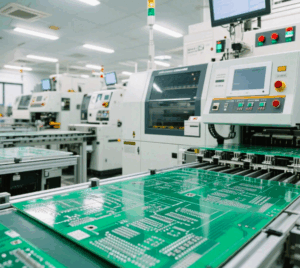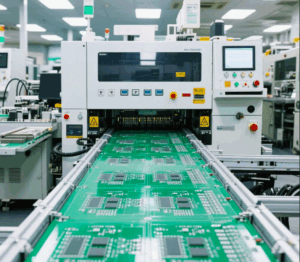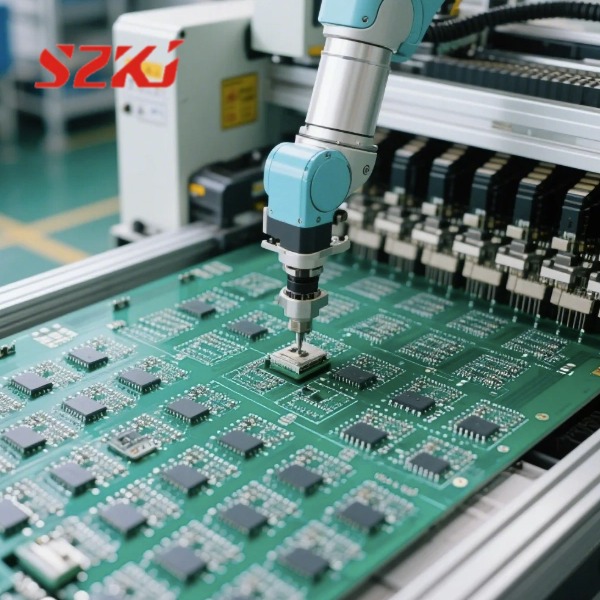Table of Contents
ToggleIn the world of electronics, “VCC” is a term you’ll find almost everywhere—from datasheets and schematics to PCB silkscreens. Yet, despite its ubiquity, few engineers pause to ask: What is the real VCC meaning? Where did it come from, and what does it truly represent today?
In this article, we’ll trace the origin and evolution of “VCC”, compare it with similar power symbols, and walk through how understanding its meaning impacts modern electronic circuit design.

1. What Is the True VCC Meaning?
At its core, “VCC” stands for Voltage at the Common Collector, a term rooted in the era of bipolar junction transistors (BJTs). In early transistor-transistor logic (TTL) circuits, NPN transistors were widely used, and their collectors were commonly tied to a shared positive power rail. That’s where the label “VCC” comes from.
But here’s the twist: as technology evolved and MOSFETs replaced BJTs in most logic families (like CMOS), engineers kept using “VCC” out of habit, even though MOSFETs don’t have collectors at all. Over time, “VCC meaning” shifted from a strict BJT reference to a generic label for a circuit’s positive power supply.
So today, when you see “VCC” on a schematic, it simply means “positive voltage supply”—often +3.3 V, +5 V, or whatever voltage your circuit runs on.
2. VCC vs VDD, VSS, and VEE: Know the Differences
Although “VCC” has become a catch-all for positive voltage, it’s important to understand how it compares to other common power labels, especially in mixed-signal or multi-voltage systems.
| Symbol | Original Meaning | Typical Use Case |
| VCC | Voltage at the Collector (BJT) | TTL, general digital logic |
| VDD | Voltage at the Drain (MOSFET) | CMOS, microcontrollers |
| VSS | Voltage at the Source (MOSFET) | Grounded in CMOS logic circuits |
| VEE | Voltage at the Emitter (BJT) | Negative rail in analog/BJT |
VCC vs. VDD:
While often used interchangeably, a purist view maintains that VCC is for BJTs and VDD is for MOSFETs. However, many modern datasheets (e.g., for microcontrollers) may use either term to indicate a positive power supply, depending on the manufacturer.
VEE and VSS:
VEE typically refers to a negative supply voltage in analog circuits. VSS is commonly the 0 V reference (or “ground”) in digital CMOS systems. Knowing which is which can help prevent costly design mistakes, especially when mixing analog and digital domains.
Tip: Always pair power and ground labels logically—e.g., VDD/VSS or VCC/VEE—based on the device family.
3. How VCC Meaning Affects Practical PCB Design
Understanding the VCC meaning is more than academic—it’s essential to building clean, maintainable, and functional electronics. Here’s how the term influences practical engineering decisions:
a. Labeling Multiple Voltage Rails
In systems with multiple supply voltages (e.g., 1.8 V for logic, 5 V for I/O), it’s common to see labels like VCC_1V8, VCC_IO, or AVCC (analog VCC). Being precise in naming prevents confusion between power domains and makes debugging easier.
b. Decoupling & Stability
Every VCC line should include decoupling capacitors placed close to the IC’s power pins. Typical values include:
0.1 µF for high-frequency noise suppression
10 µF for bulk filtering
This ensures voltage stability, especially during transient load changes.
c. Ground Strategy
Since VCC is the positive rail, you’ll almost always reference it against ground (VSS or GND). In mixed-signal designs, separating analog and digital grounds, then tying them together at a single point, minimizes noise coupling.

4. Common Misconceptions About VCC Meaning
Myth: VCC always means +5 V
Reality: VCC can be +3.3 V, +1.8 V, or even +12 V. It simply refers to the primary positive rail of a given circuit, not a specific voltage.
Myth: VCC and VDD are always interchangeable
Reality: They are often used interchangeably, but it’s better to follow naming conventions tied to device families (VCC for BJTs, VDD for MOSFETs). In datasheets, the term used often reflects the internal structure of the device.
5. Why VCC Meaning Still Matters
Even as semiconductor technologies continue to evolve, vcc meaning remains relevant because it reflects a standard of communication across generations of engineers.
Understanding the term allows you to:
Interpret older circuit schematics
Design clearer documentation for teammates
Maintain signal integrity in complex systems
Avoid costly confusion between supply lines
Final Thoughts
The next time you draw a power rail labeled “VCC,” remember that you’re not just naming a wire—you’re participating in a decades-long tradition of electronic design. Knowing the true vcc meaning deepens your understanding of circuit architecture and improves your communication as an engineer.




